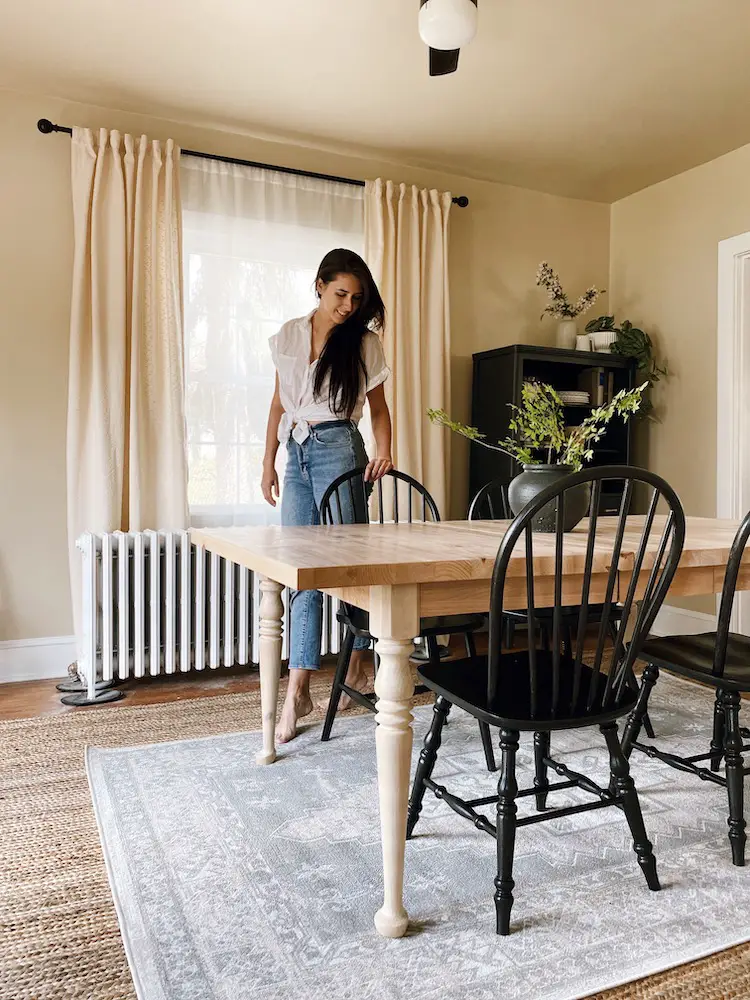Discover the Best Products for Dining Room Table Legs for every single Design
Discover the Best Products for Dining Room Table Legs for every single Design
Blog Article
An In-depth Take A Look At Table Leg Styles: Locating the Suitable Match
Selecting the appropriate eating table leg style is important for both aesthetic allure and sensible performance. Conventional 4 legs use timeless elegance and security, while the pedestal base gives boosted legroom and a modern appearance. For those with larger tables, trestle legs guarantee strong support, whereas hairpin legs present a mid-century modern-day vibe with their minimal style. The x-shaped legs blend modern style with improved stability. Each of these alternatives brings distinct advantages, making the option more than simply a matter of choice. Explore better to find which design completely enhances your dining room and way of life.
Standard 4 Legs
Amongst the numerous kinds of eating table leg styles, the conventional four-leg layout remains a timeless choice for many households. 4 legs supply well balanced support, ensuring the table continues to be secure and qualified of bearing substantial weight (dining room table legs).
From an aesthetic viewpoint, the typical four-leg layout can be quickly adapted to numerous interior designs. Whether crafted from timber, metal, or a combination of products, these legs can be elaborately carved, smooth and minimalistic, or anything in between. Their adaptability enables them to complement both rustic and modern settings seamlessly.
In addition, the simple structure of the four-leg style promotes simplicity of movement and positioning within an area. Unlike even more complex bases, this design lessens obstructions, supplying sufficient legroom for restaurants. In summary, the typical four-leg dining table leg design marries enduring sophistication with practical capability, making it an astute selection for those seeking both kind and function in their eating furniture.
Stand Base
Often celebrated for its classy and space-efficient design, the pedestal base is a recognized choice to the traditional four-leg configuration in eating table leg styles. Without corner legs, diners are paid for higher liberty of activity, making it a perfect option for round and oval tables that advertise even more intimate and comprehensive celebrations.
Moreover, the stand base's central support can handle substantial weight, permitting making use of larger tabletops, such as marble or thick wood. This toughness paired with its aesthetic flexibility makes the pedestal base a prominent option in both standard and contemporary interior setups. It can effortlessly incorporate with different style styles, from traditional sophistication to minimal modernity. Moreover, the central column itself provides a canvas for elaborate designs and artistic expressions, adding an aspect of visual rate of interest below the table. In summary, the stand base combines performance with style, making it an improved and functional choice for diverse eating environments.
Trestle Legs
Trestle legs offer a durable and ageless foundation for eating tables, characterized by their straight cross-bracing and durable assistance beam of lights. Stemming from medieval times, this layout has advanced yet kept its important framework, making it a seasonal fave in both traditional and modern settings. The central trestle light beam, typically sustained by 2 or more upright messages, supplies remarkable security, permitting for larger table lengths without the requirement for additional legs.
A significant benefit of trestle leg tables is the sufficient legroom they supply. Unlike tables with four edge legs, the lack of obstructions at the table's edges supplies unimpeded area for chairs and restaurants, enhancing comfort and access. This makes trestle tables optimal for suiting bigger celebrations, whether in an eating room or a banquet hall.
The visual versatility of trestle legs is notable. Offered in a variety of materials such as timber, steel, and composite, they can be ended up to complement a large range of indoor styles. From rustic farmhouse to smooth contemporary layouts, trestle legs can be tailored to match individual preferences. Their enduring appeal and practical advantages make trestle legs an engaging selection for those looking for both style and usefulness in their eating table.
Barrette Legs

The charm of barrette legs lies in their simpleness and flexibility - dining room table legs. Readily available in a series of materials, consisting of steel and brass, they can be ended up in numerous shades to have a peek here enhance different interior designs. Whether coupled with a rustic wooden tabletop or a contemporary glass surface, barrette legs effortlessly mix performance with a touch of vintage charm
Resilience is an additional remarkable function of hairpin legs. In spite of their fragile look, these legs are crafted to bear considerable weight, guaranteeing the dining table stays secure and secure. Additionally, they are reasonably very easy to mount, making them a preferred choice for do it yourself fanatics and professional furnishings makers alike.
X-Shaped Legs

Constructed from materials such as steel, timber, or a combination of both, X-shaped legs can be customized to match numerous style preferences. Steel legs often offer a streamlined and industrial feel, suitable for loft-style homes and modern-day eating spaces. On the various other hand, wooden X-shaped legs supply a warmer, extra rustic charm, ideal for farmhouse or diverse insides. The adaptability in materials allows home owners to customize their table to much better fit their overall style plan.
In addition, the engineering behind X-shaped legs makes sure also weight circulation, lessening the danger of wobbling and enhancing longevity. This makes them particularly appropriate for bigger table that need extra support. Essentially, X-shaped legs blend useful design with modern-day appearances, making them a classic selection for diverse dining atmospheres.
Final Thought
An extensive understanding of eating table leg designs discloses the unique features and advantages of each style. Trestle legs make certain robust support for larger tables, and barrette legs introduce a mid-century contemporary visual.
Report this page